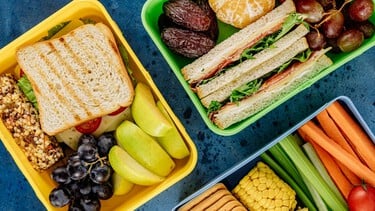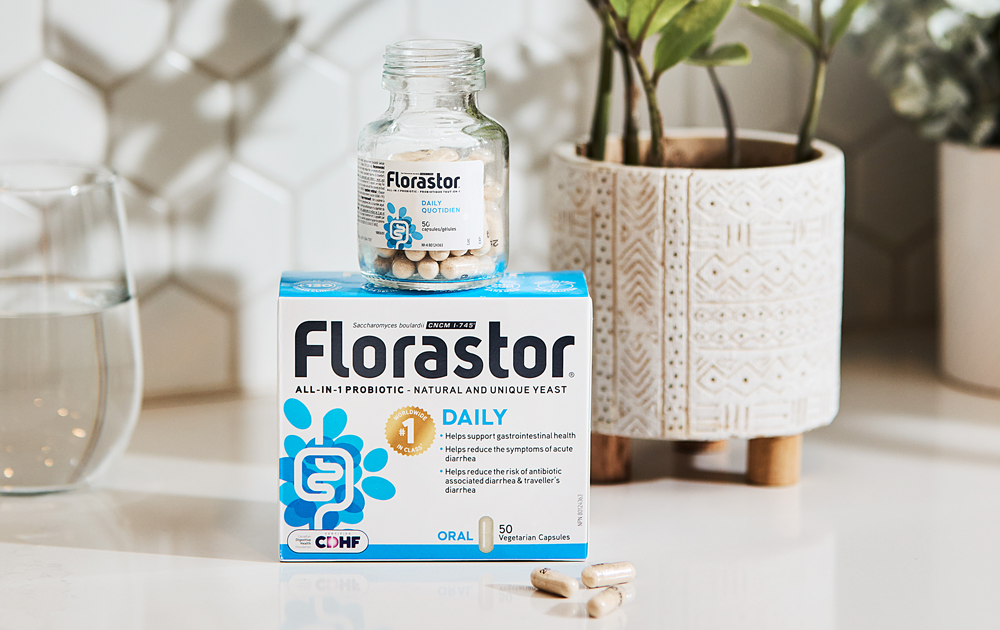Back to school lunches that nourish our little ones... and their good bacteria!

When a child leaves home for school in the morning, they bring a lunch and snacks for themselves and 100 trillion of their friends. That's a lot of people to feed, isn't it? Don't worry, it's a very small world! These are the bacteria and other microorganisms in their gut microbiota.
Children's health depends on their gut
The 100 trillion bacteria that naturally populate the gut form the gut microbiota. It plays a role in digestion, immunity, mood, and even energy levels.
Everything generally goes well when the bacterial population is diverse, happy, and living in harmony. The microbiota is then in balance. However, an imbalance in the microbiota is associated with many health problems, including obesity, inflammatory bowel disease, and allergies.
Good eating habits in children are important for developing a healthy gut microbiota and maintaining its balance.
A menu that appeals to the microbiota
What a child eats, the bacteria in their gut eat too! Dietary fiber is good bacteria’s favorite food. Fiber is found in plant-based foods:
• whole grains
• vegetables
• fruits
• legumes
• seeds and nuts, and their butters
It is important to include a wide variety of these foods in order to appeal to as many bacteria as possible. Like children, they each have their own preferences!
Here are some ideas for lunches and snacks that will nourish children and their bacterial friends.
Tasty and nutritious sandwiches
• Whole wheat bread sandwich + chicken + hummus + cucumber slices and grated carrots
Hummus (made from chickpeas) and vegetables provide fiber in addition to whole grain bread.
• Tuna wrap + plain yogurt + grated carrots + lettuce in a whole wheat tortilla
A simple way to add fiber and crunch.
• Sunflower seed butter sandwich + banana on multigrain bread
Sweet, nutritious, nut-free, and perfect for peanut-free schools.
• Grilled tempeh sandwich + light BBQ sauce + shredded cabbage in a whole grain burger bun
For kids who are curious about new flavors!
Nutritious and colorful salads
• Lentil pasta salad + corn + cherry tomatoes
Legume pasta is very high in fiber and protein.
• Quinoa salad with chickpeas, cucumbers, and dried cranberries
Colorful, sweet and savory, high in fiber, and delicious served cold.
• Brown rice salad with tofu cubes, edamame, and mango
A combination that is often popular for its sweetness.
• Whole wheat couscous salad + black beans + grilled vegetables + feta cheese
High in fiber and delicious hot or cold.
Pasta that boosts energy
• Red lentil pasta + homemade rosé sauce + grated zucchini
A dish with tender textures and sweet flavors.
• Multigrain macaroni with cheese + grilled broccoli
A revisited classic, more filling thanks to the fiber in broccoli and whole wheat.
• Whole wheat fusilli + black beans + peppers + corn
Inspired by Mexican chili, as good hot as cold.
Fun and healthy snacks
• Assorted raw vegetables (carrots, celery, peppers, sugar snap peas) + yogurt dip or hummus
• Homemade mini muffins with date puree or grated zucchini
• Banana and flaxseed muffins
• Unsweetened applesauce + chia seeds (sprinkle just before eating)
• Homemade soft bars with oats, mashed banana, and flax seeds
• Energy balls with dates, oats, coconut, or sunflower seeds
• Yogurt + homemade granola + berries
• Sliced apple + vanilla or chocolate chickpea spread
• Rye crackers + cheese
• Yogurt and berry smoothie
• Dried fruit (apricots, dates, figs) + pumpkin seeds
Tips for increasing fiber intake
• Choose whole grain or fiber-enriched breads, tortillas, and pasta.
• Add legumes (chickpeas, beans, lentils) to salads, sandwiches, and pasta dishes.
• Focus on raw fruits and vegetables, seeds (chia, flax, sunflower, pumpkin), and whole grain products.
• Make homemade muffins or bars using whole wheat flour, oats, grated or pureed vegetables, and dried or stewed fruit.
What about probiotic supplements?
Sometimes, certain factors can disrupt the proper functioning of the microbiota. This is the case, for example, when there is a change in diet, a decrease in immune defenses, diarrhea, an infection such as gastroenteritis, stress (physical or emotional), or the use of antibiotics.
In these situations, probiotic supplements such as Florastor Kids can be useful for:
• restoring the balance of the microbiota;
• supporting the natural defenses by slowing the growth of bad bacteria;
• preventing or reducing diarrhea;
• improving the absorption of certain nutrients;
• facilitating lactose digestion in people who are intolerant.
A balanced diet is the primary goal, but when necessary, probiotics can provide valuable support.

